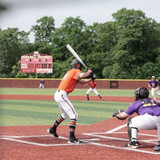What To Look For In Snowshoes
Shop Sports Sunglasses

Like many activities out there, the best way to get into snowshoeing is to just get out there and do it. But snowshoes are not just for those looking for a stroll in nature’s winter wonderland. Backcountry skiers and snowboarders utilize snow shoes to explore new territory and downhill lines. But as a sport in itself, snowshoeing is great because there isn’t a steep learning curve, risk of injury is low compared to other winter sports, snowshoeing is inexpensive.
“4,111,000 persons in the U.S. went snowshoeing at least once during the 2011/2012 winter. Participation increased 7.5 percent from the 2010/2011 season. In fact, snowshoeing was one of the only snow sports categories that enjoyed growth that season,” explained the SIA in its 2012 Participation Study.
Snowshoeing burns roughly 600 calories per hour, and is easy on the joints with its low-impact motions. So as snowshoeing continues to become more popular, here are some tips on what to look for in a pair of snowshoes.
- There are three types of snowshoes to choose from: Recreational hiking, Aerobic/Fitness, and Hiking/Backpacking.
- 1.Recreational hiking snowshoes are a great choice for beginners. These are meant for even terrain, not steep ascents or descents.
- 2.Aerobic/Fitness snowshoes are for active snowshoers who are looking for a workout. They typically have a sleek design and have tougher components built to take a beating.
- 3.If you’re an experienced snowshoer venturing through powder, Hiking/Backpacking snowshoes are the pair for you. Tough as they come, this style of snowshoe is made with an aluminum frame, durable flotation material, and bindings that fit a wide variety of boots.
- Snowshoes are generally inexpensive with prices ranging from $100 to $300. Prices can vary between high and low-end products depending on the manufacturer.
- Buying used snowshoes is a risk you might be considering. If you are shopping used snowshoes, be sure to inspect the components and make sure they aren’t damaged or overly worn. The last thing you want is to be stuck with broken snowshoes in the backcountry.
- Try before you buy. Yes it is inexpensive but it is always smart to give something a shot before you invest in it.
Most ski resorts have backcountry cross country skiing trails that double as snowshoeing venues. Major hiking trails can be used as well. It is best to research the area, climate and weather forecast before embarking on snowshoeing ventures.

 Canadian Dollar (CAD)
Canadian Dollar (CAD)
 Euro (EUR)
Euro (EUR)
 British Pound (GBP)
British Pound (GBP)






